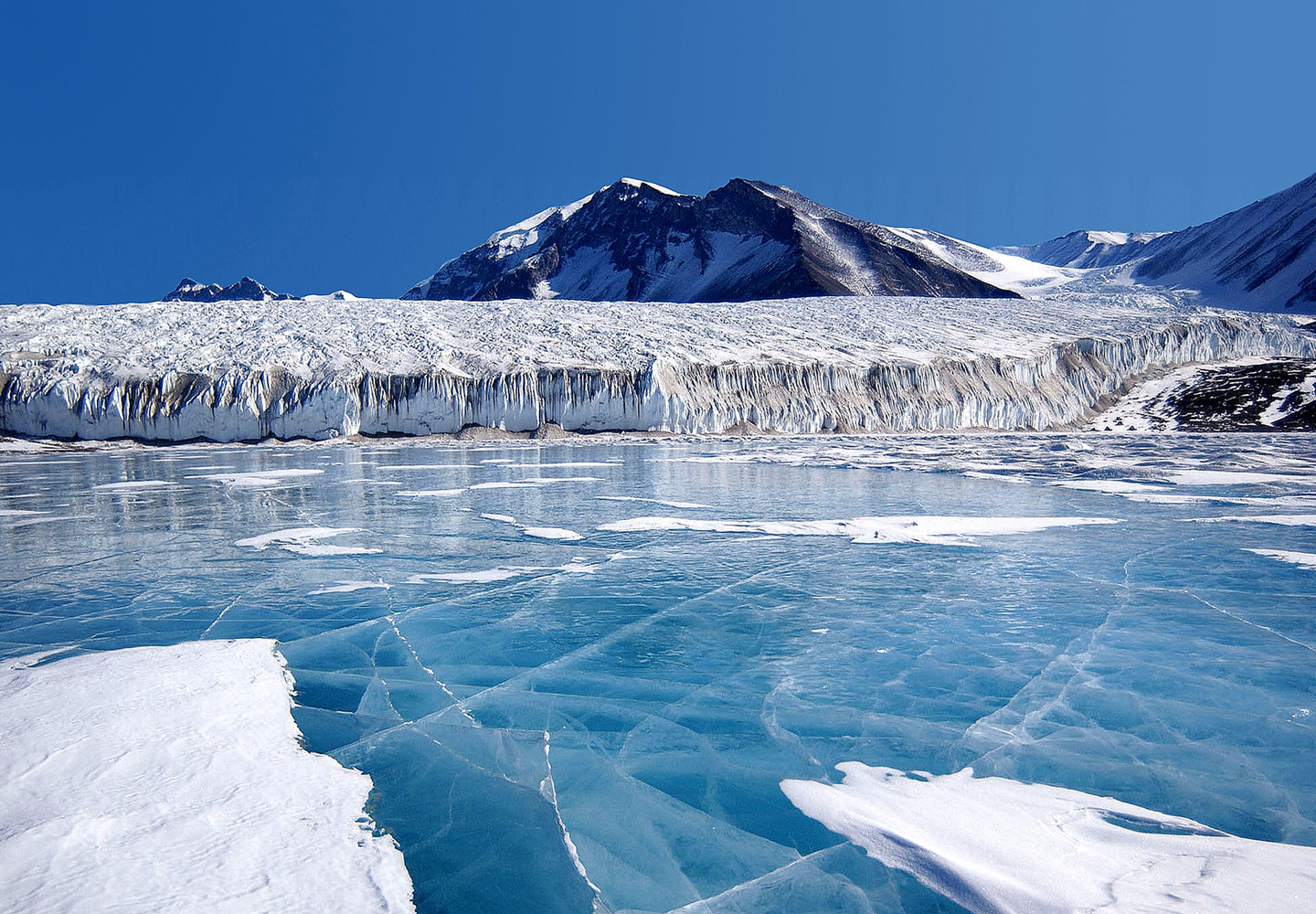Palm Trees on Antarctica - Planet Earth Online
Interview with
Headlines like "Palm trees grew on Antarctica" abounded when climate scientists recently found evidence that the southernmost continent was once a very different world to the one we know now.
The research was reported in the journal Nature and is part of an international project to examine the Earth's climate during the Eocene period between 34 and 56 million years ago. This is because by looking back into the past, they are examining the potential future of climate change. Planet Earth podcast presenter Sue Nelson met up with one of the paper's authors, Dr James Bendle from the University of Glasgow, in a suitably balmy location...
James - We're in the Royal Botanic Gardens in Glasgow and we are in an area where there are tree ferns and we're surrounded by palm trees. It is probably 22/23 or so degrees centigrade and it is very humid and very warm.
 Sue - It's extremely warm and sticky and probably about as far from Antarctica as you would think.
Sue - It's extremely warm and sticky and probably about as far from Antarctica as you would think.
James - Yes, but if you went back in time 50 million years or so to the edge of the Antarctic you would look out on an array of vegetation that would look very much like this and you would probably be experiencing very similar temperatures.
Sue - How do you know this?
James - I took part in an expedition two years ago - an ocean drilling programme expedition to the margin of the Antarctic, an area called Wilkes Land. We drilled down through four kilometres of water and a kilometre of sediment and then recovered rocks and sediments from a period called the early Eocene, 50 million years ago. It's a period of time that is being studied by climatologists as an analogue for where we might be going in the future. It was what we call the Greenhouse World. There were very high levels of CO2 at that time. We didn't know much about the Antarctic until that expedition. Some of the results that we found, some of the headline results that we're now publishing, show that there was an incredible subtropical assemblage of vegetation on the margin of the Antarctic.
Sue - And was this known before?
James - No, not from the east Antarctic. The interesting thing is that we've recovered pollen and that's work that has been led by our colleagues in Germany, in Frankfurt, and at Glasgow we're working together with colleagues in the Netherlands and we've been looking at these molecular fossils, so organic compounds that are preserved in the same sediments. The vegetation assemblage tells us that it was this subtropical world. We also recovered the pollen of plants called Bombacaceae which are very characteristic rainforest trees with huge splayed trunks at the bottom.
Sue - How long did this tropical period of Antarctica last?
James - We only see the really warmth-loving species like the palm trees and the Bombacaceae on the Antarctic coastline during the peak warmth of the early Eocene. Within a few million years they disappear and they get replaced by Nothofagus which is a southern beech tree, more like the temperate vegetation you might see in New Zealand. This was existing in the mountains but it came down and took over the coastlines as the climate was cooling. The climate was cooling at that time because Tasmania and Australia break away from the Antarctic - we get an opening up of an ocean gateway and new cold ocean current surrounding the Antarctic and the climate starts to cool.
Sue - And then it heads towards millions of years later more like the Antarctic that we know today?
James - Yeah, then by 34 million years before the present we see another really fast step wise cooling and the continent glaciates and it loses its vegetation.
Sue - So now that you know then what Antarctica was like all that time ago and at a time when its carbon dioxide levels were high or similar to what they are now, are you effectively seeing the future of Antarctica like that again?
James - If we reached CO2 emissions that were similar to that time and we let the climate system and the vegetation in Antarctica get to equilibrium then, yes, eventually. It might take several thousand years or so but, yes, that is the direction in which we will travel in if we continue with unabated emissions.
Sue - When you were doing this research and it was probably cold, icy, could you envisage that you would uncover a world that is actually far more like this stuffy, steamy, tropical plant house that we're in now?
James - A couple of times we had to move away from the area that the ship was drilling in because we had had quite large icebergs that were coming too close to the ship, so we were in that southern ocean, big ocean swirls, grey skies, really cold, icebergs around... But then when you are drilling through these geological sediments you are effectively becoming a time traveller and it is amazing now that we have the data after several years of work to look at that data and to image this world where it was - it never got below about 10 degrees centigrade in the winter, it was at least as warm as 20 degrees in the summer, maybe warmer, and then really I think aesthetically it's the vegetation assemblages knowing that there was palm trees and these Bombacaceae trees and tree ferns is just an amazing thing to think about.










Comments
Add a comment